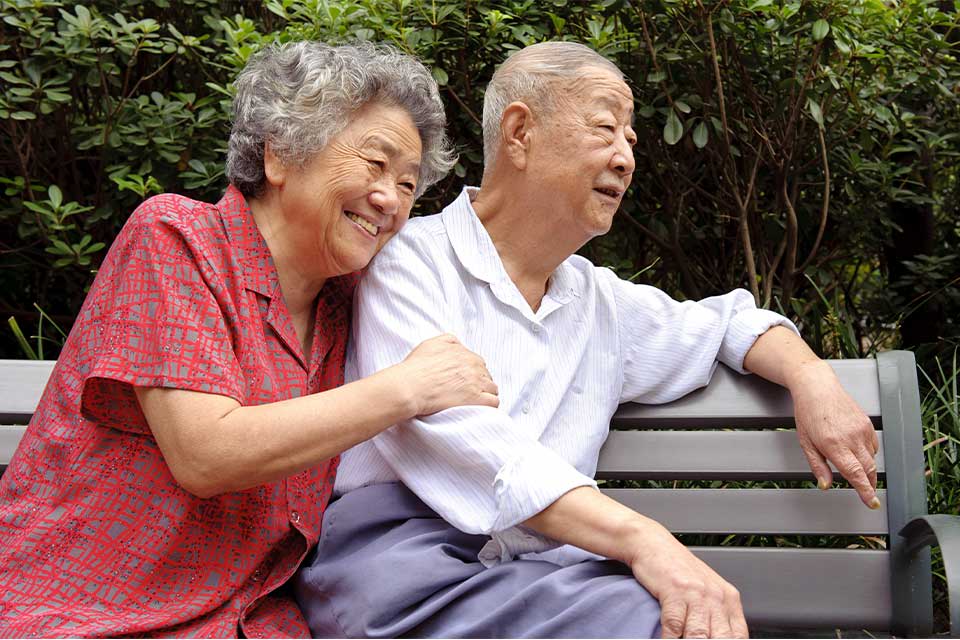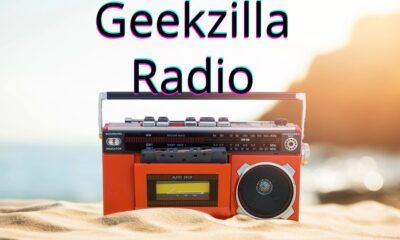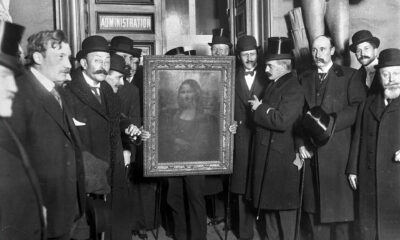Life style
Beyond the Years: Creating a Culture of Care for Our Senior Loved Ones

In an era marked by societal shifts and technological leaps, the way we care for our senior loved ones is transforming. This profound change calls for a deeper understanding of the challenges our elders face and an exploration of innovative solutions to enhance their well-being.
In this article, we will delve into the concept of creating a culture of care for our senior loved ones – one that values and prioritizes their needs, fosters meaningful connections, and empowers them to live fulfilling lives.
The Changing Dynamics of Family and Caregiving
Gone are the days when multi-generational families living under one roof were the norm. Today, globalization, urbanization, and increased life expectancy have reshaped family structures and caregiving roles. Exploring this shift is not only a historical reflection but also a foundation for understanding the new care paradigms emerging.
The Traditional to Modern Transition
Older adults in the modern age are experiencing a vastly different landscape of care and support compared to their forebears. The decrease in family size, the increase in dual-income households, and the dispersion of family members due to career and lifestyle choices have led to a shift in care responsibilities. Seniors often find themselves navigating an independent lifestyle without the primary family support they would have typically relied on.
The Rise of Professional Caregiving
With the traditional family structure giving way to more nuclear and single-parent households, the demand for professional caregiving services has surged. This shift highlights the need for high-quality assistance that extends beyond mere physical care to encompass emotional support and companionship, acknowledging seniors as individuals with diverse needs and aspirations.
Challenges Faced by Senior Loved Ones
As our elder family members enter the twilight of their lives, they encounter a myriad of challenges that can significantly impact their quality of life. Understanding these obstacles is the first step in crafting a culture of care that is truly responsive and holistic.
Social Isolation and Loneliness
One of the most pervasive issues facing seniors is social isolation and the resulting loneliness. Many older adults experience a shrinking social circle due to various factors such as retirement, health limitations, and loss of family and friends. The profound impact of isolation on mental and physical health underlines the urgency of finding creative solutions to keep seniors socially engaged.
Health Concerns and Chronic Conditions
Aging inevitably brings about health concerns, often in the form of chronic conditions that require ongoing management. This can lead to a diminished quality of life if not addressed with vigilance and care. Seniors and their caregivers must be well-informed about available treatments, lifestyle adjustments, and support networks that can help manage health issues effectively.
Financial Strains and Access to Care
The economic well-being of seniors often hangs in the balance, with financial strains affecting their ability to access necessary care and support services. Navigating complex healthcare and insurance systems can be daunting, emphasizing the need for better financial planning and education to secure the golden years of our elders.
Building a Supportive Community
The strength of a community lies in its ability to care for each of its members, especially those who have contributed to its growth over the years. It is within our power to create networks of support that foster dignity and comfort for our senior population.
The Role of Family and Friends
The love and support of family and friends are invaluable to seniors, enriching their lives with joy and meaning. Regular visits, engaging in shared activities, and providing emotional support are gestures that go a long way in nurturing the well-being of our elders.
Senior Communities or Retirement Homes
For seniors who require a higher level of care, living in senior communities or retirement homes can offer an ideal environment for social engagement and support. Assisted living communities in Ogden, Utah, and across the country provide access to a range of services and activities that cater to the diverse needs of seniors.
Support Groups and Peer Networks
Connecting with peers who share similar life experiences and challenges can be deeply empowering for seniors. Support groups and peer networks serve as platforms for sharing knowledge, experiences, and emotional support, forging relationships that combat isolation and foster a sense of belonging.
Technology and Innovation in Senior Care
The 21st century is witnessing an explosion of technology geared towards enhancing the lives of seniors. These innovations hold promise in improving health outcomes, enabling independent living, and facilitating social connection like never before.
Health Monitoring Devices and Telehealth
Wearable sensors, mobile apps, and telehealth platforms are revolutionizing the way seniors manage their health. With remote monitoring and virtual consultations, healthcare professionals can provide real-time guidance and interventions, ensuring that seniors can lead healthier, more active lives.
Smart Home and Assistive Technologies
The concept of a ‘smart home’ is no longer science fiction but a viable solution for enabling seniors to age in place safely and comfortably. From doorbell cameras that enhance security to automated systems that regulate temperature and lighting, assistive technologies are transforming living spaces to cater to the specific needs of seniors.
Social Connectivity Platforms
Technology is breaking down physical barriers and creating virtual spaces for seniors to connect with loved ones and form new friendships. Social media, video conferencing, and online communities are powerful tools for combatting loneliness, allowing seniors to stay engaged and involved in the broader social fabric.
Self-Care for Caregivers
The responsibility of caring for a senior loved one can be both rewarding and challenging. Caregivers play a critical role in the culture of care, and their well-being is essential for sustaining the support required by seniors.
Setting Realistic Expectations and Boundaries
It is common for caregivers to neglect their own needs in the pursuit of providing care. However, self-care is not a luxury but a necessity. By setting realistic expectations, seeking support, and establishing personal boundaries, caregivers can maintain their mental and physical health, which is crucial for long-term caregiving.
Resources for Caregiver Support
Thankfully, there are numerous resources available to assist caregivers on their journey. Support groups, respite care services, and educational programs can provide the knowledge and relief needed to manage the caregiver role effectively.
Emotional Well-being and Coping Strategies
The emotional toll of caregiving can be overwhelming. Employing coping strategies such as mindfulness, journaling, and seeking professional help can support caregivers in cultivating emotional resilience and maintaining a positive outlook.
Conclusion
Creating a culture of care for our senior loved ones goes beyond mere obligation; it is an affirmation of the value and wisdom they bring to our lives. By understanding the changing dynamics of family and caregiving, addressing the challenges faced by seniors, and leveraging the power of community and technology, we can build a care ecosystem that is both nurturing and effective.
Life style
The Perfect Guide to Choosing Anniversary Flowers

Introduction
Anniversaries are special milestones that celebrate love, commitment, and cherished memories. One of the most timeless and heartfelt ways to express your affection is through flowers. Whether it’s your first anniversary or your fiftieth, the right floral arrangement can convey emotions words sometimes can’t. This guide explores the significance of anniversary flowers, popular choices, and tips for selecting the perfect bouquet. We’ll also discuss the convenience of anniversary flowers delivery and how to make your gift even more memorable.
The Significance of Flowers in Anniversary Celebrations
Flowers have been symbols of love and devotion for centuries, with different blooms carrying unique meanings. Opting for anniversary flowers delivery ensures your gift arrives fresh and beautifully arranged, making the occasion even more special.
Key reasons flowers are perfect for anniversaries:
- Romantic Symbolism – Roses, lilies, and tulips represent love and passion.
- Personalized Messages – Different colors convey distinct emotions (red for love, pink for admiration).
- Timeless Elegance – A well-chosen bouquet enhances any celebration.
Whether you’re near or far, having flowers delivered adds a thoughtful touch to your anniversary surprise.
Best Flower Choices for Different Anniversaries
Each anniversary year has traditional and modern floral associations. Here are some ideal picks:
- 1st Anniversary (Paper) – Carnations (symbolizing young love)
- 5th Anniversary (Wood) – Daisies (representing loyalty and simplicity)
- 10th Anniversary (Tin/Aluminum) – Daffodils (symbolizing joy and renewal)
- 25th Anniversary (Silver) – Irises (meaning wisdom and admiration)
- 50th Anniversary (Gold) – Yellow roses (celebrating enduring love)
Matching flowers to the anniversary year adds a meaningful layer to your gift.
Factors to Consider When Choosing Anniversary Flowers
Before selecting a bouquet, keep these aspects in mind:
- Recipient’s Preferences – Favorite flowers or colors make the gift more personal.
- Seasonal Availability – Peonies in spring, sunflowers in summer, etc.
- Arrangement Style – Classic roses, mixed bouquets, or elegant orchids.
- Fragrance – Some flowers, like lilies, have a strong scent, while others are subtle.
A well-considered choice ensures your flowers resonate deeply with your partner.
Why Fresh Flowers for Anniversaries Make the Best Gift
While chocolates and jewelry are great, flowers for anniversaries remain a classic for good reason:
- Instant Emotional Impact – Bright, fresh blooms create an immediate sense of joy.
- Versatility – Suitable for any anniversary, whether casual or grand.
- Customization Options – Add-ons like chocolates, vases, or handwritten notes enhance the gift.
- Symbolic Longevity – Just as love grows, flowers can be preserved as keepsakes.
A beautifully arranged bouquet is a gesture that never goes out of style.
Tips for Preserving Anniversary Flowers
Make your floral gift last longer with these care tips:
- Trim Stems Diagonally – Helps flowers absorb water better.
- Change Water Daily – Prevents bacterial growth.
- Keep Away from Direct Sunlight – Extends freshness.
- Use Flower Food – Packets provided with bouquets help nourish blooms.
For a lasting memory, consider drying petals or pressing them in a frame.
Unique Ways to Present Anniversary Flowers
Go beyond the traditional bouquet with these creative ideas:
- Flower Subscription – Monthly deliveries to keep the celebration ongoing.
- Flower Wall or Petal Path – For a grand romantic gesture.
- Personalized Message-in-a-Bottle – Combine flowers with a heartfelt letter.
- Surprise Delivery at Work – Make their day extra special.
Adding a personal twist makes the gift unforgettable.
Conclusion
Anniversary flowers are more than just a gift—they’re a timeless expression of love. Whether you choose a classic red rose bouquet or a modern mixed arrangement, the right flowers can make your anniversary unforgettable. With the convenience of anniversary flowers delivery, you can surprise your loved one no matter where you are. And when you select the perfect flowers for anniversaries, you’re not just giving a beautiful present—you’re celebrating your journey together in the most heartfelt way. Choose wisely, and let your flowers speak the language of love.
Life style
Rejuvenation Skin Care: Your Guide to Timeless Beauty and Healthy Skin

Introduction
In today’s fast-paced world, maintaining healthy, youthful skin requires professional care and advanced treatments. At Re-juvenation Skin Care Clinic, we combine science-backed techniques with personalized attention to help you achieve your skincare goals. Whether you’re seeking preventive maintenance or transformative results, our classic Re-juvenation Skin Care Clinic approach blends time-tested methods with cutting-edge technology. This comprehensive guide explores our philosophy, services, and what makes professional skin rejuvenation different from at-home routines.
The Re-juvenation Skin Care Clinic Philosophy
Our Re-juvenation Skin Care Clinic operates on three core principles:
Personalized Treatment Plans
- Comprehensive skin analysis
- Custom-blended product formulations
- Condition-specific protocols
Science-Based Approaches
- Medical-grade equipment
- Clinically proven ingredients
- Results-driven methodologies
Holistic Wellness Integration
- Nutritional counseling
- Stress management techniques
- Lifestyle optimization advice
We treat skin as an organ reflecting overall health, not just a surface to be decorated.
Common Skin Concerns We Address
Our clinic specializes in treating:
✔ Aging-Related Issues
- Fine lines and wrinkles
- Loss of elasticity
- Age spots and pigmentation
✔ Environmental Damage
- Sun damage repair
- Pollution protection
- Dehydration reversal
✔ Medical Conditions
- Acne and rosacea
- Eczema and psoriasis
- Scarring and stretch marks
✔ Preventive Maintenance
- Collagen stimulation
- Barrier function strengthening
- Early intervention strategies
Each concern requires specialized treatment protocols for optimal results.
Our Signature Treatment Technologies
We invest in medical-grade equipment for superior outcomes:
Resurfacing Modalities
- Fractional laser treatments
- Medical microdermabrasion
- Chemical peel systems
Stimulation Therapies
- Radiofrequency skin tightening
- Microcurrent facial toning
- LED light therapy
Injection Techniques
- Neuromodulators for dynamic wrinkles
- Dermal fillers for volume restoration
- Mesotherapy for nutrient delivery
All procedures are performed by licensed professionals with extensive training.
The Classic Re-juvenation Skin Care Clinic Experience
Our classic Re-juvenation Skin Care Clinic package includes:
Consultation Process
- Detailed skin mapping
- VISIA complexion analysis
- Lifestyle assessment
Treatment Protocol
- Deep cleansing preparation
- Customized active serums
- Specialized massage techniques
- Targeted mask applications
Post-Treatment Care
- Homecare product recommendations
- Follow-up scheduling
- Progress tracking
This comprehensive approach ensures lasting results beyond the treatment room.
What to Expect During Your Visit
A typical appointment includes:
- Skin Assessment (15-20 minutes)
- Visual examination
- Digital imaging
- Treatment Session (30-90 minutes)
- Cleansing and prep
- Primary procedure
- Soothing applications
- Post-Care Consultation (10-15 minutes)
- Immediate aftercare instructions
- Product recommendations
Most clients notice visible improvements after just 1-3 sessions, with optimal results appearing after a complete treatment series.
Maintaining Results Between Visits
Extend your clinic results with:
✔ Medical-Grade Homecare
- Pharmaceutical-strength retinoids
- Antioxidant serums
- Growth factor formulations
✔ Lifestyle Practices
- SPF 30+ daily application
- Adequate hydration
- Antioxidant-rich diet
✔ Periodic Maintenance
- Monthly facials
- Seasonal peel treatments
- Annual skin assessments
Consistency is key for sustained skin health improvement.
Conclusion
At Re-juvenation Skin Care Clinic, we believe beautiful skin begins with healthy skin. Our classic Re-juvenation Skin Care Clinic methodology combines advanced dermatological science with individualized attention to address your unique complexion needs. From cutting-edge treatments to timeless skin care wisdom, we provide comprehensive solutions for all skin types and concerns. Whether you’re beginning your skincare journey or seeking to enhance an existing routine, professional guidance makes the difference between temporary fixes and lasting transformation. Schedule your consultation today to discover how our evidence-based approach can help you achieve and maintain your healthiest, most radiant skin.
Life style
The Importance of Consistency Across Your Digital Profiles

A consistent digital presence strengthens your professional brand and ensures that potential employers, clients, and collaborators receive a clear and unified impression of your expertise. Inconsistent information across multiple platforms can create confusion and weaken your credibility.
Aligning Information Across Platforms
Ensure that your job titles, work history, and skills are consistent across LinkedIn, personal websites, and other professional platforms. Discrepancies may raise questions about the accuracy of your experience.
Using a Cohesive Personal Brand
Your profile photo, headline, and summary should reflect the same tone and message across different platforms. A well-defined brand makes it easier for recruiters and industry professionals to understand your expertise and career focus.
Synchronizing Updates and Achievements
Regularly update all your profiles with new skills, certifications, and accomplishments. Keeping information current demonstrates engagement and growth in your field.
For expert guidance on crafting a professional and consistent digital presence, visit Professional Profile.
About Professional Profile
Professional Profile helps professionals craft compelling digital profiles that amplify their online presence and open doors to career opportunities. Through expert advice, tools, and resources, Professional Profile empowers individuals to showcase their skills, build a personal brand, and navigate the digital landscape for career success.
-

 News2 years ago
News2 years agoVaping: Beyond the Hype – Unveiling the Risks and Realities
-

 Fashion2 years ago
Fashion2 years agoWhat is λιβαισ? A Complete Guide
-

 Entertainment2 years ago
Entertainment2 years agoUnleashing Geekdom: Exploring the Wonders of Geekzilla Radio
-

 Games2 years ago
Games2 years agoHow to Download Games From ApunKaGames: A Comprehensive Guide
-

 Fashion8 months ago
Fashion8 months agothesparkshop.in/bear-design-long-sleeve-baby-jumpsuit
-

 News8 months ago
News8 months agoUnlocking the Magic of Gemstones: A Comprehensive Guide
-

 Life style2 years ago
Life style2 years agoDemystifying λυσασ: Unveiling the Enigmatic Concept
-

 Fashion8 months ago
Fashion8 months agoThesparkshop.In Clothing Men
